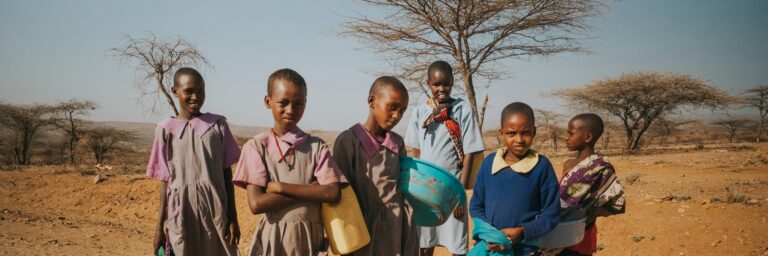
Fragile Futures: Current United Nations Data is Hiding the True Scale of Child Mortality
New evidence from Population Matters’ Fragile Futures report reveals a stark truth: child mortality this century will be higher than current projections suggest. This article examines why the current United Nations’ projections are wrong, how it’s impacting the lives of children and what must urgently be done.
“The health and wellbeing of children should be one of society’s highest priorities, not just for children today, but also for children of the future.”
Fragile Futures report
For decades, the United Nations’ projections have been considered the gold standard for tracking global health trends such as infant and under-five mortality rates.*
Charities, policymakers and governments rely on these figures to prioritise resources that shape and deliver health policies for children. Data accuracy is essential to ensure cost-effective solutions reach communities that need them most, particularly in regions that are at high risk of infant mortality.

The United Nations predicts that under-five mortality rates will keep falling throughout this century. But those projections rely on past trends. The climate and environment are in rapid decline – our planet is getting hotter, and air pollution is rising. The United Nations prediction model fails to take this into account.
Why the United Nations’ Projections Are Flawed
The Fragile Futures report reveals a worrying gap in the United Nations’ infant mortality projections: they overlook two major threats to children’s health today.
- The Increasing Impacts of Climate Change: The United Nations’ modelling does not include the rising risks posed by extreme heat, air pollution, droughts, and other accelerating climate-driven crises. These environmental changes threaten decades of progress and leave millions of children vulnerable.
- Population Dynamics: The projections fail to account for the reality of global demographics. This century, most children will be born in the most climate-vulnerable regions, principally Sub-Saharan Africa and South & Central Asia. These regions also have the fewest resources to combat climate-related health threats.

Together, these blind spots paint an alarmingly incomplete picture. If we continue on this path—relying on outdated assumptions—we risk failing millions of children and their families.
“Climate change poses threats to human health, safety, and security, and children are uniquely vulnerable to these threats. Given this knowledge, failure to take prompt, substantive action would be an act of injustice to all children.”
Global Climate Change and Children’s Health – American Academy of Pediatrics
The Climate Crisis is a Child Health Crisis
The impacts of climate change are being felt all over the world. Previously farmable land is turning into arid, inhospitable terrain, leading to crop losses and water shortages. Droughts, one of the deadliest natural disasters, are becoming commonplace. Undernourishment continues to rise worldwide, affecting an estimated 828 million people (2022).

What’s less well known is that extreme temperatures are already linked to a 60% increased risk of premature births, a major driver of infant mortality. As Associate Professor at Africa International University Adelaide Lusambili said last year:
“Mothers and newborns deserve protection – climate solutions must include their voices.”
The United Nations’ child-mortality projections optimistically assume that past progress will continue. But if catastrophic flooding in Spain, multi-year droughts in the Horn of Africa, and rampant Californian wildfires in January have taught us anything, it’s that climate change is reshaping the entire world and putting children’s lives at risk.
Infant Mortality Rates Are Already Climbing
Contrary to official predictions, recent data shows infant mortality is already increasing in both high- and low-income countries, including the United States, France, India, Madagascar, Cambodia, Nepal and the Philippines.
The Fragile Futures report highlights a stark reality: as the impacts of climate change intensify, the number of vulnerable children affected will rise dramatically.
As the report warns, “The number of children adversely affected by climate change will increase not only because there will be more children, but because of the increasing number of vulnerable children.”
Thanks to decades of progress, more children than ever are surviving their first years. But climate change threatens to undo those hard-won gains.
A Wake-Up Call
This week, the Population Matters team will be bringing this urgent evidence to the 58th Conference on Population and Development (CPD58) in New York. There, we will present our data, challenge current United Nations’ projections and call for immediate action -bringing together global experts, advocates and decision-makers to drive this vital conversation forward.

The world cannot afford to base life-saving policies on flawed information. Protecting children’s health starts with better data and stronger investment in health systems and health services needed by newborns, infants, children and women – sexual and reproductive healthcare – for the sake of millions of women and children worldwide.
Join us online this Tuesday, 8 April, for our Fragile Futures Roundtable — a vital conversation about shaping policies that protect children’s health in a changing world.
_________________________________________________
* The under-five mortality rate refers to the probability a newborn would die before reaching five years of age, expressed per 1,000 live births. Infant mortality is a related term that refers to the probability a newborn would die before reaching their first birthday.



